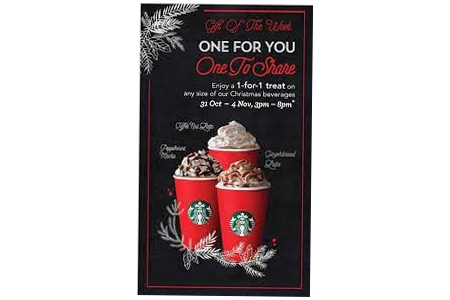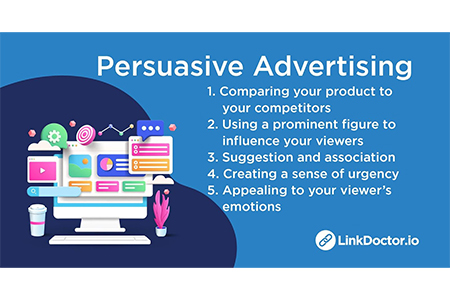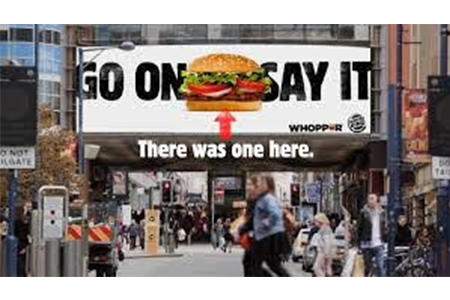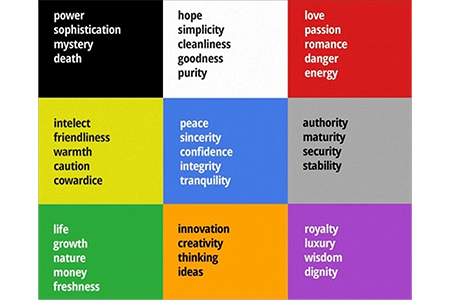What is Persuasive Advertising?
Advertising methods that resonate with customers by strategic communication attempt to guide their behavior, along with attitudes and feelings towards brands and services, or products. Persuasive advertising goes beyond informative facts to resonate on an emotional level by evoking desires and values, along with pain points. The advertising persuasive strategy persuades the public by demonstrating how a product assists them and resolves their problems, and aligns with their hopes using narrative and social endorsement or emotional bonding. Promotional persuasion makes use of gentle psychological methods to influence consumer choice and establish brand loyalty during business competition.

Features of Persuasive Advertising
The essential features of persuasive advertising include emotional appeal, together with strong message delivery and consumer-focused orientation. The advertising method uses impactful language together with visual elements to evoke emotional response, including trust and fear and desire, and belonging in viewers. Real people testimonials, scarcity appeals, and compelling stories are the norm. The tone is forceful but not intimidating, with or without a sense of urgency or contemporaneity. The advertising strategy eschews the enumeration of product features and, instead, emphasizes benefits and outcomes, which takes customers straight to an unqualified call for action. Persuasive advertising that works targets individuals by way of direct communication, which affects their beliefs and actions without appearing overly promotional.

Pros of Persuasive Advertising
Focuses on audience needs
Persuasive advertising can be said to exist with customers put beforehand into the process. The procedure discerns their issues and wants and sets the product as the answer. The message is more powerful if the content is relevant and relatable to the target group.
Builds brand credibility
The presence of real customer testimonials combined with factual information and expert endorsement makes a persuasive ad look truthful. A company message being consistent over time strengthens the voice of the brand as being reliable and genuine.
Drives customer loyalty
The connection is what the customer hears and feels, which will allow the customer to come back. Ads lend express brands in personal identities, while brand values create lasting connections with their audience.
Increases engagement
The primary mechanism in persuasive communication that stimulates the pass along creative process is getting an emotional reaction, liking testimonials with interaction, and word-of-mouth. When done well, this process shifts the perspective of the audience from mere passive observers to active participants in the story of the brand.
Boosts conversions
The marriage of emotional appeals with intellectual ones, combined with timely action prompts, makes it easy for consumers to decide on marketing. A message well-focused on consumer needs will have better chances of translating interest to action.
Enhances trust and loyalty
Repetitions of persuasive messages increase consumers' familiarity. The more such attributes are put among consumers to define a company with positive attributes, the more they trust the company, leading to repeated purchases and brand recommendations.

Cons of Persuasive Advertising
Impersonal nature of advertising
Whereas an emotional appeal may be the most compelling element of a marketing pitch for persuasion, at times it can tend to be stereotypical. Without being personal, the message is likely to raise questions of sincerity in some cases or may not be able to reach certain types of people, each having a different need.
Dissatisfied customers
Where anticipation generated through convincing advertisements fails to correspond to real product experience, customer disillusionment ensues. Hyperbole of benefits or features always backfires and tarnishes brand image.
Potential for misleading product portrayals
In attempting to influence, certain ads might exaggerate or leave out important information. Not only does this mislead consumers, but it can also result in consumer skepticism, complaints, or even legal action for deceptive advertising.
Risk of customer attrition
Too pushy, persuasive strategies can switch off prospective buyers. If shoppers are treated as if they are being manipulated or deceived, they will switch away from the brand completely to more honest options.
Techniques of Persuasive Advertising
The carrot and the stick
This approach relies on a combination of reward and threat to drive behavior. While the "carrot" offers rewards or profit, the "stick" threatens punishment, making for a powerful twin pressure.
The scarcity principle
The absence gives rise to a rush. When, somehow or other, a product is advertised as rare, meaning it is either scarce in supply or in demand over time, the feeling of missing out gets drilled into the prospect and thus produces hurried decisions and actions.
One message per advertisement
The simpler, the better. The idea here is to have a message that is easy enough to understand in one go. That prevents ambiguity and connects the core message clearly and meaningfully.
Second person verbiage
Addressing a message in the second person by using "you" or "your" makes it more personal in an intimate sense with the reader. The story or conversation is injected into the reader's consideration so that he or she feels seen, heard, and spoken to, an important parameter of persuasion.
Glittering generality
This strategy employs attractive but imprecise words to create intense emotion. Phrases such as freedom, best, or innovation sound great but provide leeway for individual interpretation, allowing the message to be more flexible.
Weasel words
Phrases such as up to, may help, or virtually create the appearance of bold statements without absolute commitment. They're convincing because they promise an advantage while reserving legal loopholes for the brand.
Avant garde
This strategy markets a product as being ahead of time or forward-looking. It is marketed towards trendsetters who are eager for innovation, portraying the product as new, unique, and forward-looking.

Persuasive Advertising vs Informative Advertising: Which is More Important?
| Aspect | Persuasive Advertising | Informative Advertising |
|---|---|---|
| Objective | Influence emotions and behavior | Deliver facts and product information |
| Tone | Emotional, engaging, sometimes dramatic | Rational, objective, and straightforward |
| Best For | Brand awareness, emotional connection, driving action | Product launches, technical products, comparison shopping |
| Used In | Fashion, lifestyle, entertainment, luxury products | Healthcare, electronics, B2B sectors |
| Effectiveness | High when emotion drives purchase decisions | High when detailed understanding is needed before purchase |
| When to Use | When standing out or building a brand identity | When accuracy and transparency are critical |
Examples of Persuasive Advertising
Nike's Just Do It campaign is a timeless instance of persuasive advertising. It sells not shoes, but resolve and drive. Coca-Cola's Open Happiness associates a soft drink with emotional happiness and companionship. Apple relies frequently on spare imagery and motivational copy to create a desire. Dove's "Real Beauty" campaign is based on self-worth, employing real individuals to touch people deeply. These companies successfully employ emotion, narrative, and identity to convince rather than inform.

Conclusion
Persuasive advertising is a key to successful marketing today by connecting with what really motivates consumer choices, values, identity, and emotions. Informative ads deliver required facts, but persuasive ads create motivation and connection. Ethically and strategically used, persuasive advertising has the power to take a brand from an item vendor to a significant part of consumers' lives. Amidst competition, it's not only what you offer, but how you make them feel, that becomes memorable.
FAQs
Using persuasion, the scribe tries to influence the consumer. Cialdini has included the six principles of reciprocity, scarcity, authority, liking, consistency, and social validation.
Emotional appeal is an appeal to the emotions rather than to logic. It builds tones of joy, fear, guilt, or nostalgia, connecting more closely with consumers and granting effects that influence how these consumers think of and react to a brand.
Brands build their credibility on an idealized figure created by linking their product to these figures. This association lends an increase in credibility and desirability to a product.
Call-to-action is a statement of what the advertiser hopes to occur. Clear direction as to what the reader must do next, such as purchasing, clicking, or registering, maximizes the potential for engaging a response or conversion from the customer.
An ad offers frequent exposure of the brand message that facilitates holding the message in the consumer's mind. This awareness at the time of purchasing decision-making increases the likelihood of recall of the brand and creates confidence.
Some of these ads use some of the persuasive techniques to promote behavioral change, and do so through public awareness campaigns and NGOs. They use all sorts of emotional appeals in favor of humanitarian, public health, or environmental causes.



